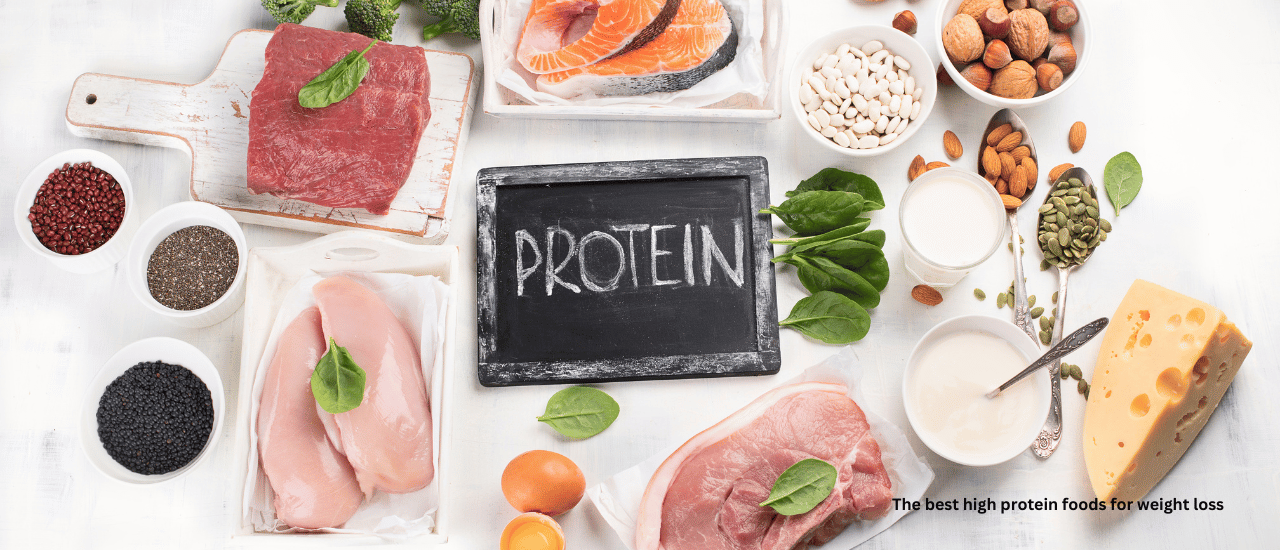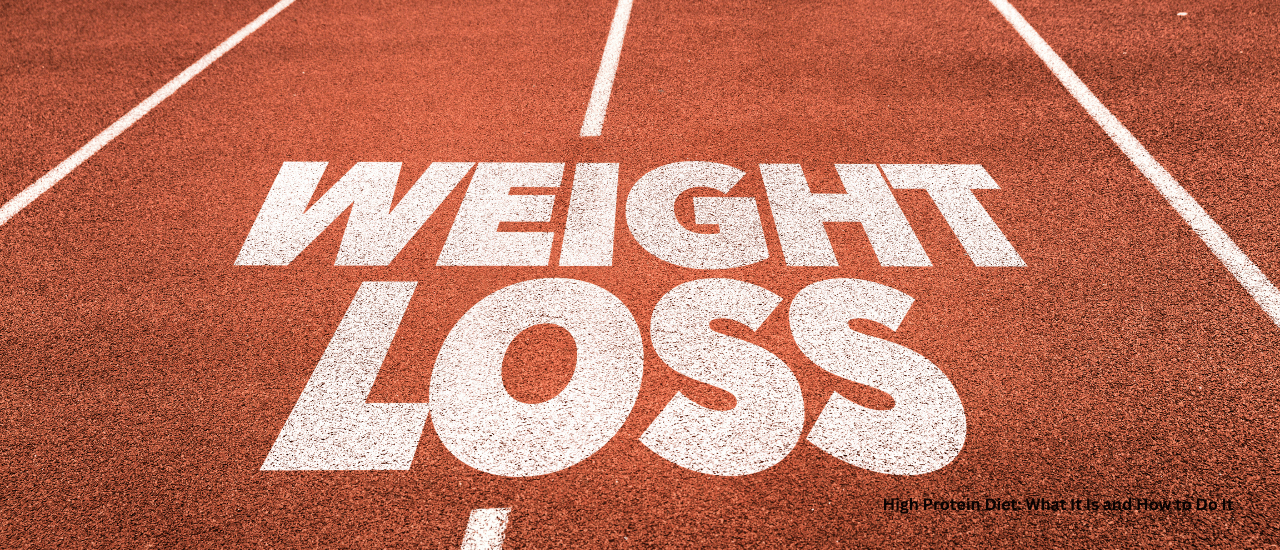Would you like a tailored weight loss meal plan based on your preferences?
Our personalized meal plans are crafted to suit your specific needs and goals. They feature delicious, easy-to-make meals that you’ll love — with all the planning taken care of for you.
Simply answer a few questions — like how much weight you want to lose and what types of food you enjoy — and you’ll receive a customized weight loss meal plan almost immediately.
The top 8 high-protein foods
Although protein can be found in a variety of both animal and plant-based foods, the amount of protein can differ significantly. Below are the top 8 high-protein foods, along with a few tips on how to incorporate them into your diet:
1. Meat
Meat is flavorful, satisfying, and an excellent source of protein. Contrary to concerns about red meat (such as beef, pork, and lamb), consuming it regularly may actually benefit weight loss, aid in blood sugar control, and improve insulin resistance.
Moreover, eating red meat has been shown to enhance muscle mass and strength, especially when paired with resistance training. Additionally, eating poultry (“white meat”) frequently may also assist with weight loss.
Of course, the rest of your diet plays a role, so it can be challenging to attribute benefits to one specific food.
Here’s how much protein you’ll find in 100 grams (3.5 ounces) of cooked meat (approximately the size of a deck of cards), unless noted otherwise:
- Chicken breast: 30 grams
- Lean steak (filet mignon, top sirloin): 30 grams
- Lean pork (tenderloin, ham): 26 grams
- Lamb shank: 26 grams
- Chicken thigh: 22 grams
- Lamb chops: 22-24 grams (3 small lamb chops)
- Fatty steak (ribeye): 20-23 grams
- Bacon: 20-22 grams (5 slices, or 60 grams)
- Fatty pork (ribs, shoulder, butt): 20-22 grams
- Sausage: 18-20 grams
Cooking extra grilled or roasted meat for dinner and using the leftovers for lunch the next day can help you meet your protein needs while saving time.
2. Eggs
It’s hard to find a food more versatile than eggs. Whether used in omelets, quiches, baked goods, or served on their own, eggs offer high-quality protein at an affordable price. Whole eggs seem to outperform egg whites when it comes to building muscle.
Three large eggs contain about 19 grams of protein.
Although they’re often seen as a breakfast staple, eggs make a smart protein choice for any meal. Keeping hard-boiled eggs in your fridge provides a convenient, grab-and-go protein option for busy days.
3. Soy
Soy is the only plant-based protein source that provides all nine essential amino acids your body cannot produce on its own. Some studies show that soy protein can offer appetite control and weight loss benefits similar to those of meat. Like eggs, soy is also versatile and affordable.
We understand that soy can be a controversial topic. In our food policy on soy, we discuss why its benefits may outweigh potential risks, particularly for vegetarians and vegans.
Several soy-based products are low in net carbs, making them suitable for low-carb or keto diets:
- Canned black soybeans are like little protein powerhouses, packing a solid 20 grams of the good stuff in each cup (which is about 200 grams, by the way). And the best part? They’re pretty much carb-free, with just 2 grams of net carbs hanging out in there. Perfect for when you need a quick protein fix without the carb overload!
- Tempeh: 18-20 grams of protein and 4-7 grams of net carbs per 2/3 cup (100 grams)
- Nattō: 18-20 grams of protein and 9-12 grams of net carbs per 1/2 cup (100 grams)
- Edamame beans: 17 grams of protein and 5-7 grams of net carbs per 1 cup (155 grams)
- Tofu (extra firm): 18-20 grams of protein and 4 grams of net carbs per 1 cup (250 grams)
You can buy frozen edamame beans and sprinkle some shelled ones into soups and salads, or steam them as a side dish. Firm tofu, when fried, makes a delicious, crispy, high-protein alternative to croutons in salads.
4. Fish
Like meat and poultry, fish is a great source of protein. Additionally, oily or fatty fish are rich in essential omega-3 fatty acids, which can offer some health benefits.
If you’re not a fan of certain types of fish, especially those with a stronger “fishy” taste, good news: all fish varieties are rich in high-quality protein and other nutrients.
Here’s how much protein is found in 100 grams (3.5 ounces) of cooked fish (approximately the size of a deck of cards):
- Non-oily fish (most varieties, including canned tuna): 24-28 grams
- Oily or fatty fish (salmon, herring, sardines, mackerel, anchovies): 20-26 grams
Fresh fish tastes best when consumed the same day it’s prepared. However, smoked, frozen, and canned fish are excellent alternatives with longer shelf lives, less prep time, and more affordable prices.
5. Legumes
Beans and other legumes can be a great protein option for vegetarians and vegans. They’re high in fiber, and some studies suggest that legume-rich diets may decrease insulin resistance and reduce heart disease risk factors.
However, the protein in legumes is less easily absorbed compared to animal protein and doesn’t provide all essential amino acids in the necessary amounts. Plus, legumes generally have more net carbs than other protein sources in this guide.
Here’s how much protein and net carbs you’ll get from one serving of various cooked legumes:
- Lupini beans: These little guys pack a punch with 25 grams of protein and just 11 grams of net carbs in one cup (which is about 166 grams, by the way)!
- Lentils: 18g of protein and 24g of net carbs in a single cup (about 200g)
- So, lentils are like this cool little powerhouse, right? In just one cup of ’em, you’re getting a solid 18 grams of protein, and they come with a decent chunk of 24 grams of net carbs. Pretty neat for a tiny legume!
- Black beans: These little guys pack a surprising protein punch with 16g of the good stuff, and they’ve got 26g of net carbs to keep you fueled up for your next adventure. Just toss ’em in a cup that weighs about 170g, and you’re all set!
- Pinto beans: These little guys pack a punch with 15g of protein and only 25g of net carbs in a single cup (about 170g). Not too shabby for a chill snack or meal addition, right?
- Chickpeas/garbanzo beans: A cup (about 164 grams) of these little guys pack a decent punch with 11 grams of protein to keep you feelin’ strong, and they come with a side of 26 grams of net carbs to keep you movin’ and groovin’!
- Green peas: 10 grams of protein and 20 grams of net carbs per 1 1/4 cups (200 grams)
6. Greek yogurt
When it comes to yogurt, opt for Greek. It’s made by straining liquid whey from yogurt, resulting in a thicker product that’s higher in protein and lower in carbs than other types. A study showed that a higher-protein yogurt snack reduced hunger and increased fullness more than a lower-protein yogurt snack.
Most plain Greek yogurts contain 15-18 grams of protein and 5 grams of carbs per 170-gram (3/4 cup) container. However, always check the nutrition labels, as protein and carb counts can vary between brands.
Try Greek yogurt as a substitute for sour cream, top it with chopped nuts, or enjoy it on its own.
7. Shellfish
Various types of shellfish are popular for their delicate flavor and texture. Most shellfish are rich in high-quality protein and essential nutrients. One exception is oysters, which are relatively low in protein compared to other shellfish.
Crustaceans like shrimp, lobster, and most crab are nearly carb-free. Mollusks like clams, mussels, and scallops do contain some carbs, so this is something to keep in mind if you’re following a strict keto diet.
Here’s how much protein you’ll get from your favorite shellfish (values are per 100 grams/3.5 ounces of cooked shellfish, unless noted otherwise):
- Shrimp: 24-26 grams per 10-15 large shrimp
- Crab: 20-24 grams per 1 crab leg
- Clams: 24-26 grams of protein and 5 grams of carbs per 10 small clams
- Lobster: 20-24 grams of meat in a medium-sized lobster tail, which is typically around 140 grams in weight, give or take a little.
- Mussels: 22-24g of protein and 7g of carbs for about 20-25 of those little guys
- Scallops: 20-22g of protein and just 4-5g of carbs for a handful of those big sea scallops, like 6 of ’em.
Fresh shellfish is always a treat, but canned options are convenient for a quick protein boost.
8. Protein powder
At Diet Doctor, we recommend focusing on minimally processed foods. So you might not expect protein powder to be on this list, but here it is, making a surprise appearance!
We’ve included it because it can be helpful for some vegans and vegetarians who struggle to meet their protein needs on a keto or low-carb diet. This is especially true for vegans who don’t eat soy.
While we typically advise choosing less processed foods, protein powder might occasionally make sense for some people.
Plant-based protein powders, such as those made from peas, pumpkin seeds, or various grains and legumes, often provide around 20 grams of protein per serving and are typically low in carbs. For more information and suggestions, check out our vegan essential nutrient needs guide.




